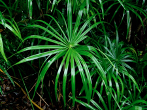Reach for an Umbrella? How About an Umbrella Palm?
go.ncsu.edu/readext?767795
en Español / em Português
El inglés es el idioma de control de esta página. En la medida en que haya algún conflicto entre la traducción al inglés y la traducción, el inglés prevalece.
Al hacer clic en el enlace de traducción se activa un servicio de traducción gratuito para convertir la página al español. Al igual que con cualquier traducción por Internet, la conversión no es sensible al contexto y puede que no traduzca el texto en su significado original. NC State Extension no garantiza la exactitud del texto traducido. Por favor, tenga en cuenta que algunas aplicaciones y/o servicios pueden no funcionar como se espera cuando se traducen.
Português
Inglês é o idioma de controle desta página. Na medida que haja algum conflito entre o texto original em Inglês e a tradução, o Inglês prevalece.
Ao clicar no link de tradução, um serviço gratuito de tradução será ativado para converter a página para o Português. Como em qualquer tradução pela internet, a conversão não é sensivel ao contexto e pode não ocorrer a tradução para o significado orginal. O serviço de Extensão da Carolina do Norte (NC State Extension) não garante a exatidão do texto traduzido. Por favor, observe que algumas funções ou serviços podem não funcionar como esperado após a tradução.
English
English is the controlling language of this page. To the extent there is any conflict between the English text and the translation, English controls.
Clicking on the translation link activates a free translation service to convert the page to Spanish. As with any Internet translation, the conversion is not context-sensitive and may not translate the text to its original meaning. NC State Extension does not guarantee the accuracy of the translated text. Please note that some applications and/or services may not function as expected when translated.
Collapse ▲The regular cold frontal passages that kept our temperatures in check in December also brought rain across the state. The National Centers for Environmental Information (NCEI) reports a preliminary statewide average precipitation for last month of 4.20 inches, or our 44th-wettest December since 1895. The heaviest precipitation fell across the northeastern Piedmont and the central Coastal Plain. The preliminary statistics from NCEI show 2020 ranked as our 4th-warmest and 2nd-wettest year out of the 126 years with observations available.
Gardeners with areas that tend to retain moisture can attest to the fact that while 2020 wasn’t a record-setting year for temperatures or precipitation on a state level, it was still exceptionally warm and wet overall. Keeping in mind the concept of the right plant in the right place at the right time, consider the elegant and eye-catching Umbrella Palm plant (Cyperus alternifolius) for those wet spots in the garden.
It’s robust and not fussy in otherwise hard-to-plant wet places, expanding by slowly spreading rhizomes. The umbrella palm will thrive almost anywhere with even sloppy-wet or simply fertile soil in full sun or part shade to provide stunning texture and grace to the landscape. It’s smooth, green, leafy grass-like bracts whorl to form an umbrella at top of the 3-6 foot stem (scape). It sports small white flowers at the base of each leaf in mid-summer.
sloppy-wet or simply fertile soil in full sun or part shade to provide stunning texture and grace to the landscape. It’s smooth, green, leafy grass-like bracts whorl to form an umbrella at top of the 3-6 foot stem (scape). It sports small white flowers at the base of each leaf in mid-summer.
Large-sized, dwarf or variegated, this perennial member of the ornamental grass and sedge plant type adds interest to the “wet feet” challenged garden scape and is often used in water gardens. It has a high heat tolerance and a strong, dense root system that while more aggressive in warmer climates, make it a successful candidate for absorbing and accumulating excess nitrogen from industrial discharges in phytoremediation effluent treatments to enhance water quality.
Generally, for everyone outside of Florida fall is becoming wetter and all other seasons are the same or becoming drier. Global climate models have a difficult time predicting whether the rainfall in the Southeast will increase or decrease because the physical processes that form clouds and rain in the computer models are highly variable.
When considering your landscape remember: The Right Plant In The Right Place At The Right Time. Cyperus alternifolius is attractive AND hard working, however, the plant roots need a good amount of moisture, the foliage will be killed with the first frost, but remerges in the spring, and the crown needs temperatures above 20˚F, so if planted outside site it correctly and provide mulch over the winter. For more details about this plant, go to the Cyperus alternifolius page in the Extension Gardener Plant Tool Box. Grab your Umbrella and enjoy Mother Nature!
Minda Daughtry is the Horticulture Agent for North Carolina Cooperative Extension in Lee County.




